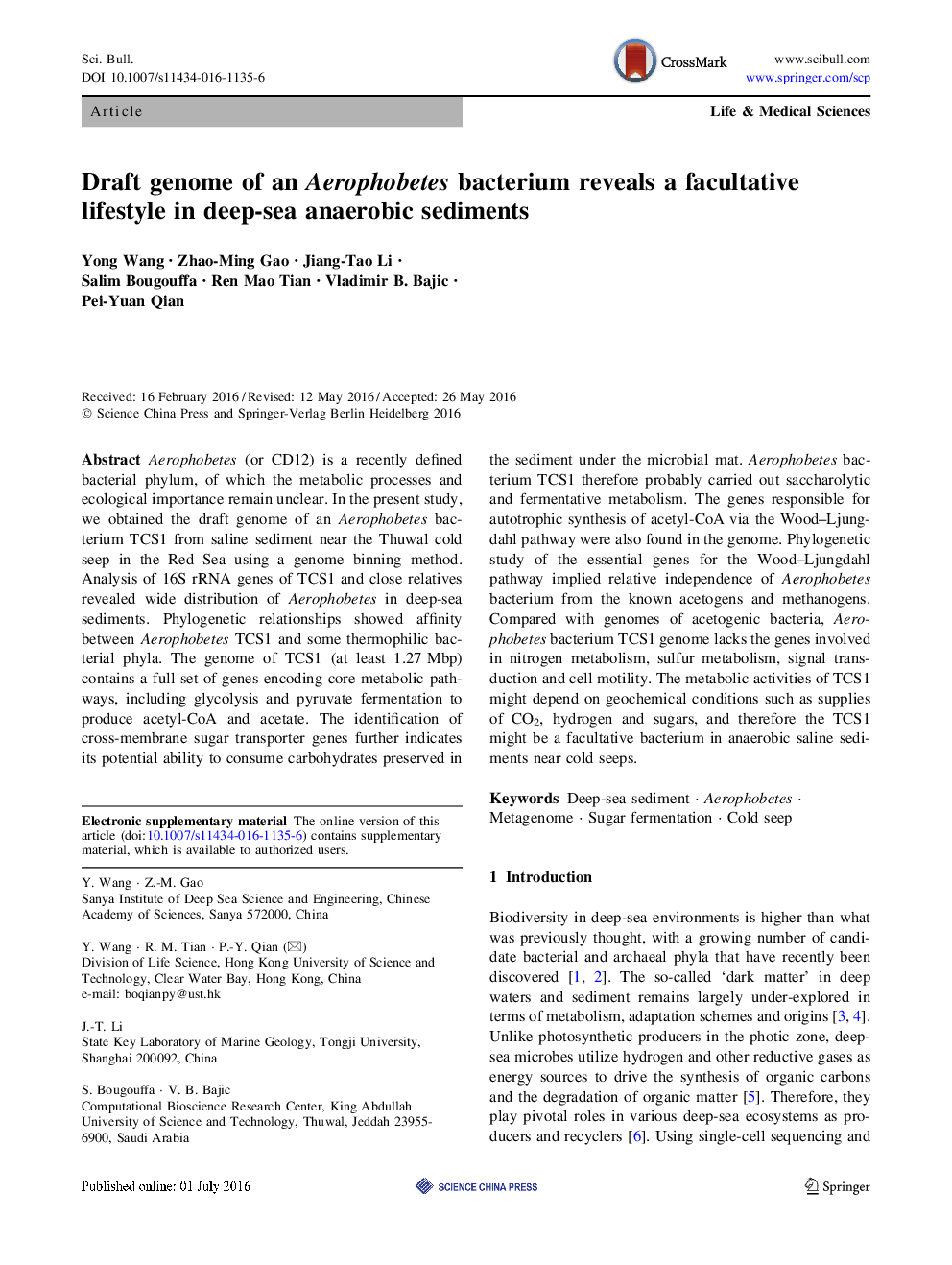| Article ID | Journal | Published Year | Pages | File Type |
|---|---|---|---|---|
| 5788756 | Science Bulletin | 2016 | 11 Pages |
Abstract
Aerophobetes (or CD12) is a recently defined bacterial phylum, of which the metabolic processes and ecological importance remain unclear. In the present study, we obtained the draft genome of an Aerophobetes bacterium TCS1 from saline sediment near the Thuwal cold seep in the Red Sea using a genome binning method. Analysis of 16S rRNA genes of TCS1 and close relatives revealed wide distribution of Aerophobetes in deep-sea sediments. Phylogenetic relationships showed affinity between Aerophobetes TCS1 and some thermophilic bacterial phyla. The genome of TCS1 (at least 1.27Â Mbp) contains a full set of genes encoding core metabolic pathways, including glycolysis and pyruvate fermentation to produce acetyl-CoA and acetate. The identification of cross-membrane sugar transporter genes further indicates its potential ability to consume carbohydrates preserved in the sediment under the microbial mat. Aerophobetes bacterium TCS1 therefore probably carried out saccharolytic and fermentative metabolism. The genes responsible for autotrophic synthesis of acetyl-CoA via the Wood-Ljungdahl pathway were also found in the genome. Phylogenetic study of the essential genes for the Wood-Ljungdahl pathway implied relative independence of Aerophobetes bacterium from the known acetogens and methanogens. Compared with genomes of acetogenic bacteria, Aerophobetes bacterium TCS1 genome lacks the genes involved in nitrogen metabolism, sulfur metabolism, signal transduction and cell motility. The metabolic activities of TCS1 might depend on geochemical conditions such as supplies of CO2, hydrogen and sugars, and therefore the TCS1 might be a facultative bacterium in anaerobic saline sediments near cold seeps.
Related Topics
Physical Sciences and Engineering
Chemistry
Chemistry (General)
Authors
Yong Wang, Zhao-Ming Gao, Jiang-Tao Li, Salim Bougouffa, Ren Mao Tian, Vladimir B. Bajic, Pei-Yuan Qian,
